Tairāwhiti Unconference 2023: a conference designed by you
You never know what will happen at an Unconference and that’s the beauty of it. Like an “anti-conference”, no one sets the agenda in advance, there are no keynote speakers and no obligation to stay in a session you don’t enjoy. Brought to life by the people who show up for it, the Unconference topics are set at the start of the day by everyone present.
After setting the topics the day kicks off into a total of 24 sessions with four sessions running parallel throughout six time slots. Since no one can visit all of the sessions, we have notetakers jotting down the key perspectives and whakaaro shared. So for both those who were there and those who missed it, read on to find out what our community had on their minds at the 2023 Tairāwhiti Unconference.
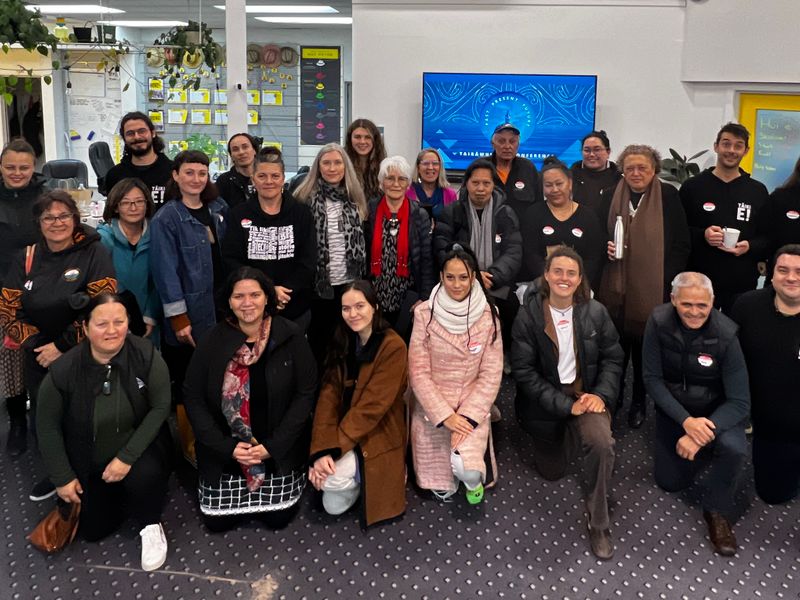 2023 Tairāwhiti Unconference
2023 Tairāwhiti Unconference
AI and the future of work
This popular session hesitantly explored the deeper questions around AI: “What does a future look like where we are free, and what does it look like where we are not free?”; “What are the things that these tools will be able to do or not do?”; “Where do we set the boundaries?”; “Will there be an AI community?”; “Who has control and sovereignty over Maori data?”
Hopes were shared on being able to keep people safe while also turning fear of the future into excitement. There are bodies of knowledge that should be shared with everybody, and those who should be kept safe to look after the wellbeing of people, according to one of the participants. Another person shared the concern that new generations have very little interest in what other beings around them need or want. While yet another person shared the idea that the opposite of AI is NI “Natural Intelligence”. There was a shared understanding that it is important to understand a bit about how AI tools work on the backend and that the way these tools are used influenced the further evolution and design of them.
Conspiracy theories
Yep, you read it right. Someone had a burning desire to talk about conspiracy theories so we did just that. You might think this session might raise a lot of tension, but it was surprisingly easy going and not for a lack of exploring different viewpoints. The room was full of different and divergent worldviews, ways of defining truth, fact checking and sources of information. There were vaxxed people, unvaxxed people, christians, agnostics, boomers, millennials, you get the point.
First we all agreed that “You’re never sure what they’ve got in the lollies” - in reference to the snacks on the table. Then we explored our favourite theories and most of us learnt one of two new ones. For example, have you heard of the theory that climate change is caused by an alternate universe drifting closer to us? On a more serious note we discussed that the gap between conspiracy theories and misinformation is so small it’s hard to know how to sift and sort. “What realms are you aware of?”, asked one person and “Who’s history are you listening to?”, asked another. In the end we conspired to make up our own conspiracy theory. We haven’t quite worked out the details but the main drift is that you need pink safety gear to operate in Haututu Hacklab.
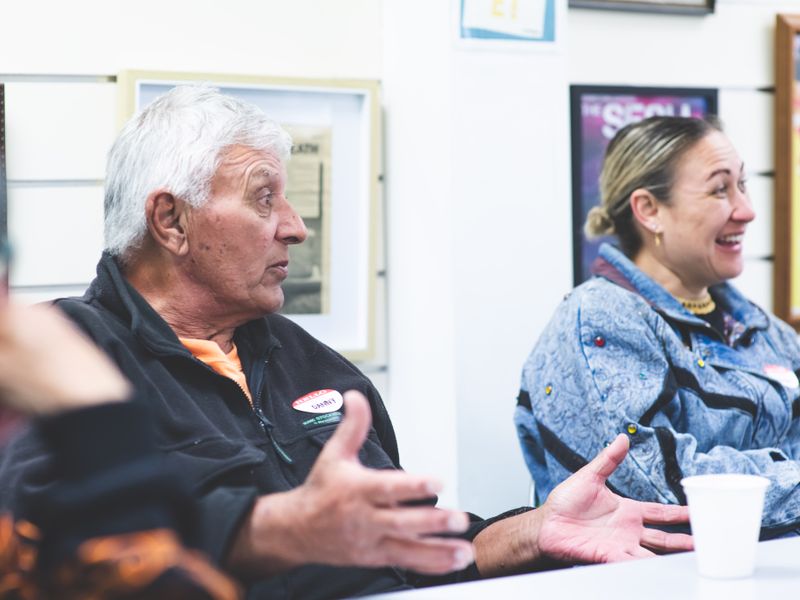 2023 Tairāwhiti Unconference
2023 Tairāwhiti Unconference
Rongoa, spirituality and recreational drugs
This session held a broad range of thinking about the substances we put into our bodies that affect our awareness, cultural practices around that and questions around legalities and age. The initial question was: “When are drugs recreational?”. This branched out into when recreational becomes negative and how spirituality fits in with recreational drugs. There was also a discussion around the lack of education on drugs in schools and that there is a lack of consciousness and awareness about how they are being used.
Another angle of conversation was health, both mental and physical. One view was that our bodies are only made to take natural things and that we should come back to the tipuna practice for growing food, kai moana, and kai in general. There was a comment that there is a high increase in cancer rates in Aotearoa. In relation to drugs, one participant mentioned: “People who abuse drugs are ruining their life, leaving aside that the majority of people who consume “drugs” in high doses are more like dealing with some sort of trauma”. The innovative treatment of methamphetamine addiction with psilocybin was also discussed.
Communications and cyclones
A lot of concern and frustration was voiced in this session that reflected on the communication challenges during and post cyclone Gabrielle. A lot of the people in the room were from isolated communities. There was a sense that there is a difference between what communities need and what councils think they need. A lot of ideas were shared on possible resources from a map of available Starlink connections to a community whiteboard for question and answers to the idea of using drones to check on houses on the coast.
There were questions around resourcing with some suggesting to resource community leaders. Another suggestion was to open schools, libraries and community centres earlier to alleviate parental stress. Another voice shared that there is a need for local tv content and that there could be a question box for local media. The general sense was that we are still unprepared.
Empty nest syndrome
This calm and intimate session served as an uplifting space for the host who pitched the session and others in a similar space. Participants unpacked the feelings of emptiness and loneliness experienced when children leave their parental house. Some were worried about their mental health. “My biggest worry is about hearing myself…”, said one person.
There were many suggestions on practical things to do to fill up the space, such as taking on a home improvement project or having other whānau move in. There were also deeper reflections: “Filling up the space is about managing the emptiness, but is this the right thing to do?”, one person wondered. Another person responded with encouragement: “The first thing to do is what we are doing now, being open to having a conversation about it.” There was a shared sense that it’s important to mark the space and make room for any feelings that might come up.
Atuatanga and astrology
This very popular session with an atmosphere of being very open to learning. The space was held mainly by wahine Māori sharing their whakaaro on connecting and reconnecting to Atua Māori and Atua Wāhine in particular. There were reflections on the use of the word “Gods” and how that doesn’t represent the purpose of Atua as kaitiaki. One participant raised the question of how people relate to the question of new Atua and dynamic ways of understanding our ‘new world’.
The discussion then went into a space of different realms, universes and concepts of time. “Atuatanga existed before Maui fished up Aotearoa”, shared one participant, “there was a whole time of Atua existing before we know”. Thoughts were shared on how Atuatanga differs per iwi, hapu, and whānau. Multiple wahine emphasised the need to reclaim mātauranga as women and reconnect with Atua Wāhine. There were also whānau from Japan in the room who reflected on the similarities in indigenous Atuatanga: “We don't have Gods, we have kaitiaki. It is normal and it is within us. This kaupapa should empower us”.
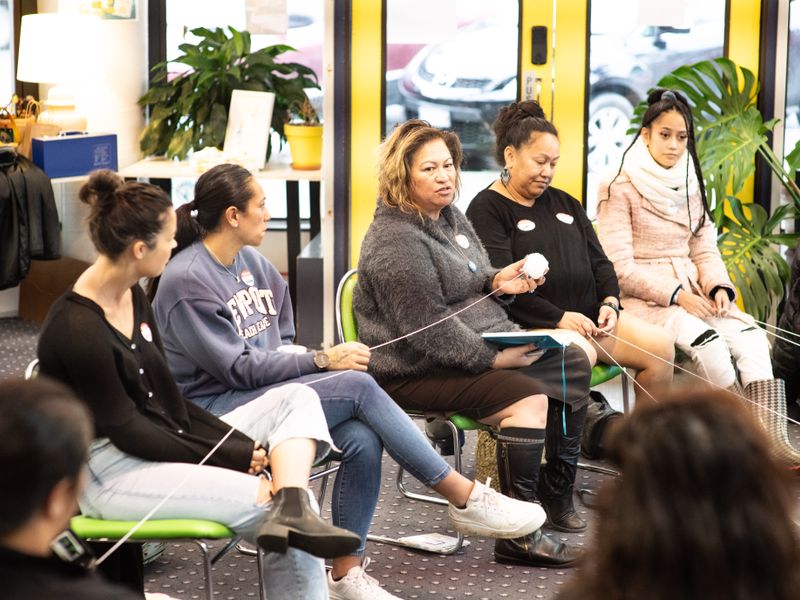 2023 Tairāwhiti Unconference
2023 Tairāwhiti Unconference
Buying a house
This classroom-style session was full of tips on how to buy a house. One of our local real estate agents shared knowledge on what a good credit history is, the requirements to buy a house, rent to buy, growing your savings, and the importance of compounding interest. “Real estate is not a sprint, it is a marathon”, she advised, “The best way to “save” for your dream house is buying a house as soon as you can, and build your way up to it”.
Pataka and community resource sharing
There was a strong Wairoa contingent at the Unconference and this session they dedicated to learning about our local pataka kai network and how they could create something similar back home. Questions were answered about how they are kept safe and hosted, how to remove the stigma around them and how to prioritise where they are located.
There was a lot of excitement about sharing experiences as well as some brainstorming on the possibilities of using tech and innovation to improve the network. One of the key points shared is that the network is organically grown and that the fruit and veggies shared are a gift for everyone, not just the homeless. The looks of the pataka also make a difference which is why they are always painted and decorated.
Solutions to slash
There was a lot of excitement in this hui about finding solutions to the slash challenge. “We have solutions, we need to put them in front of the right people”, was the consensus. The most discussed option was using a particular type of mushrooms to compost the slash and make a resource. People were aware of the “Slash for Cash” project and were looking to find out more about it.
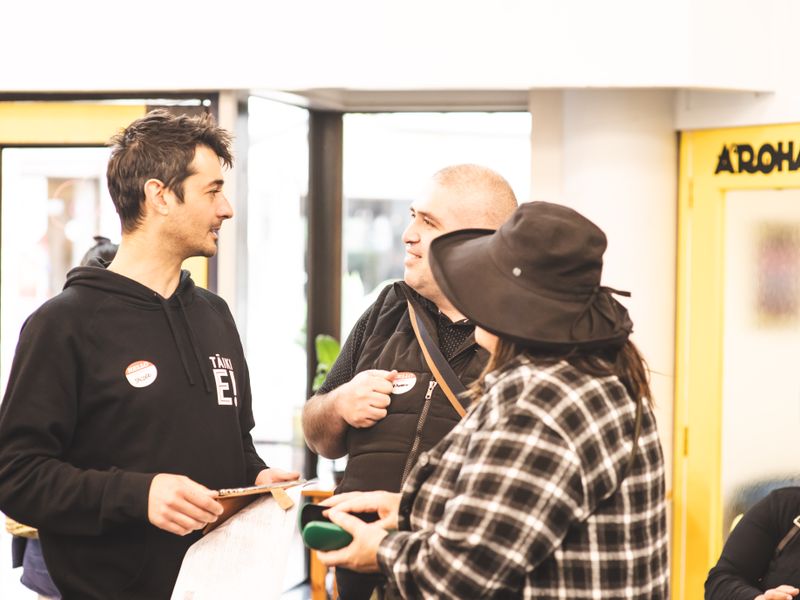 2023 Tairāwhiti Unconference
2023 Tairāwhiti Unconference
Place of whānau in the current world
This session came from a place of seeking support for whānau. There was concern that children are left to their devices most of the day. Gender diversity was identified as a challenging topic with people struggling to understand topics of gender and sexual preference. The willingness to engage from a place of understanding was strong. As one person put it: “We can look at things from a place of fear, or from a place of love”. Another participant suggested that we make a directory with all of the places that can provide support for whānau.
Culture and collaboration
This beautiful brainstorm explored the idea of having an event in October to share the Nippon culture of Japan. Participant Akiko shared some ideas and gathered input from people on what they could be interested in learning. The session resulted in a list of potential activities including growing bonsai, a haiku contest, zen gardening and manga drawing. There was emphasis on peoples’ desire to learn more in depth about other cultures, beyond food and music, towards a spiritual connection.
How do you make the marae atea safe?
This was a serious indepth session that reflected on what safety looks like in the context of marae and in particular the marae atea. Questions were raised around the place of women on the marae, the roles of tāne and wahine, masculine and feminine energy, the depth or shallowness of maoritanga, and whether we are investing enough in growing wisdom in this space.
Safety through change
How do we safely navigate organisational change in a workplace? This was the question brought to the table in this constructive session. With a lot of teachers in the room, they made a list of tips including having an extra person in the room; acknowledging when things don’t go well; starting with a conscious whakawhanaungatanga; having some tools in place for when things become unsafe; using tools like digital whiteboards when the hui is digital; and going deeper through careful questioning.
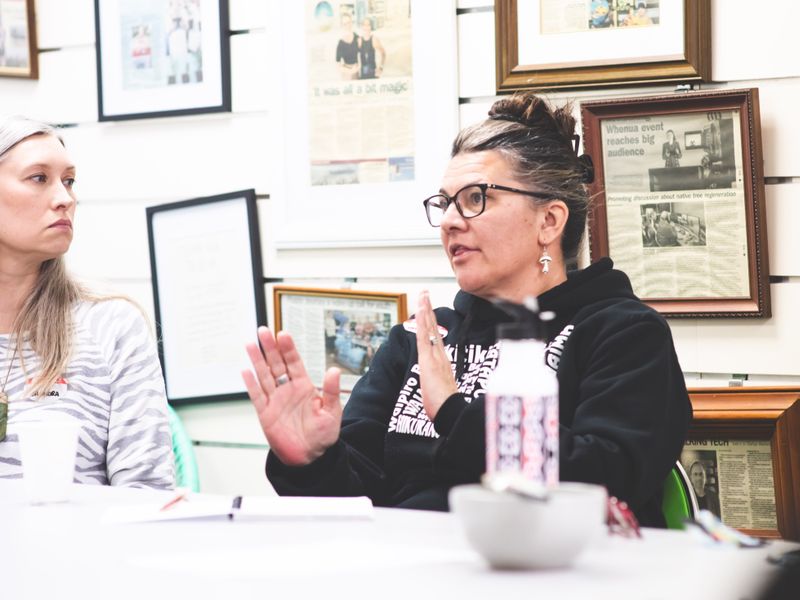 2023 Tairāwhiti Unconference
2023 Tairāwhiti Unconference
Whakapapa online safe space
How far can we go in terms of sharing our whakapapa? How much is too much? How far can we go with that? These were the central questions that kicked off this session. With a strong wahine Måori presence, participants reflected on various ways to understand and connect to whakapapa. It was noted that people used to connect their korero to the whakapapa of the korero and that this is rarer today. At the same time there was recognition of the explosion of måtauranga Måori today and how people are getting back to having relations with the living universe.
The idea of whakapapa online was connected with different narratives. One person shared the example of online research where they looked at slash: “All the literature came from a real economic perspective. Wanted to connect back to the basic fundamentals of our whakapapa and how we are interconnected”. Another person related that whakapapa can be seen as a way to explain taio. The discussion roamed into the realms of AI, commonalities between indigenous people and sexual identity and whakapapa. The session ended with the host reflecting that: “Just being able to have this type of korero is amazing”.
How do we re-indigenise coming out of mamae
One of the main themes in this korero was how to reconnect people, to bring them home for wananga and healing. It was also about looking at what relates to us and what we can apply. “It might not be indigenous to you”, shared someone, “it might be from other cultures.” A lack of safe spaces was identified and someone asked: “What's the tool that we can use to bring us together, wananga, and spend time. Safe spaces where we can have real discussions about what we are really living through. Hold the heavy and light stuff together.”
Intergenerational hacks
For the storytellers of the group, this wananga encouraged learning through listening and making meaning through narrative. “Learn to use your taringa, listen for what’s needed before being the conductor”.
It was observed that our older generations hold decades of knowledge, experience and perspectives that can be handed down. We need to combine our valuable knowledge to empower young voices moving forward. One participant reflected that it is often the messages from our elders that teach us to be good people.
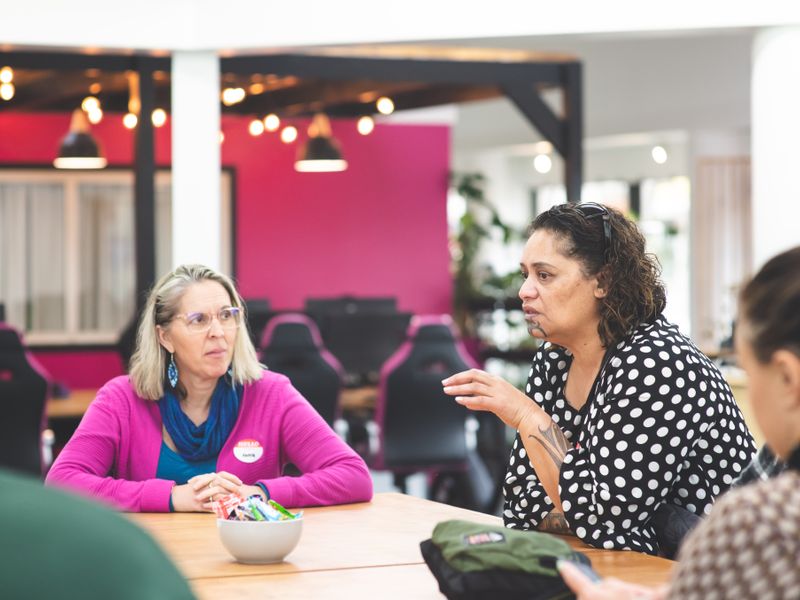 2023 Tairāwhiti Unconference
2023 Tairāwhiti Unconference
Helping artists create income from their art
A passionate pitch style session by a community leader committed to fostering development in the music and arts industry. Questions posed where “what sort of infrastructure do we need in order to provide an ecosystem where artists can thrive?” And “what is wrong with the current model and the one being proposed?”. Beginning from a place of trust and relationships as the foundation, an idea was shared to create a business entity aimed at supporting musicians and artists to create income from their work in a non-exploitative way.
An interesting viewpoint shared was that having a separate fund for Māori arts may not be as helpful or supportive for toi Māori as an advocacy and partnership model would be. It was also shared that we need to foster more collaboration and involvement across art forms. This allows for diverse points of view and knowledge sharing to foster income opportunities.
Creativity, art and meditation
Valuing peace, creative expression, artistic process and wellness, this session was a seed germinating between a diverse collective. A commitment was made between individuals to create an offering for our community that enables creativity. Watch this space!
Daily creative practice was also cultivated amongst the group. “What daily practice can we action that will connect us to our creativity?” It was recognised that meditation can take place in a range of contexts. The shower, the garden, while listening or creating music, carving hue, dancing and focussing on the breath.
Make indigenous places and spaces
This reflective and thought provoking session explored ‘place’ from a Māori perspective and in relation to te taiao. In design and community planning we need to consider aroha, koha and tīkanga Māori as well as co-governance and the role of education in projects. Making cities attractive with vegetation and arts is one step towards re-indigenizing public areas; a good example of a simple starting project would be in Treble Court.
Another kaupapa explored was the lost connection between land and the buildings on them. We have an institutionalised vision of places. Whare were once temporary and interconnected with nature. Education was emphasised as an important starting point. How can we create indigenous spaces without access to learning tikanga Māori? It is disempowering to see major developments happening on your land with no choice given to you; just the need to compromise. To make appropriate changes, we need to be educated. We need to find our old blueprint.
Learning from animals
What can we learn from animals that we can adapt or utilise to thrive, flourish and be well. And how can we, as humans, shift back to being more connected with all other animals. After all, we have evolved from animals and we are connected to them. As one participant put it: “The birds are always talking to us, it’s up to us to listen, or ignore”.
One of the main ways to think about this topic was the idea of shifting from an ‘egosystem’ in which we see humans as being above the rest of nature, to an ‘ecosystem’ where we acknowledge that we are a part of nature along with all other beings.
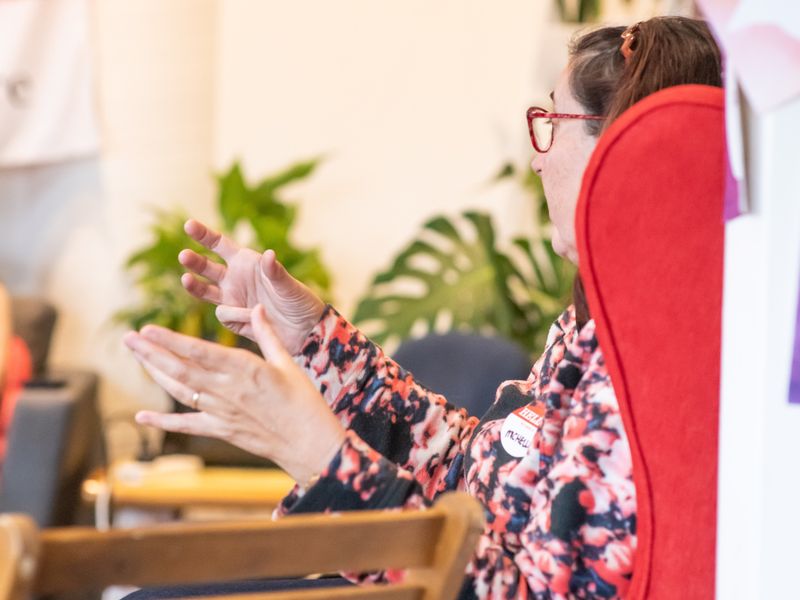 2023 Tairāwhiti Unconference
2023 Tairāwhiti Unconference
4 Day work week
An apparent favourite among unconference topics, the 4 day work week made a return this year. This time the session was intimate and vulnerable as the employers in the room shared their challenge trying to provide the best work life balance for their employees while also meeting the outcomes they need. “Not all employers are a**holes”, they said.
Many in the room related the extra time that a 4 day work week would create to their wellbeing, even though some admitted they would have to re-learn how to spend their extra time at home again. Creating a garden, or investing in a side-hustle, there was definitely an interest in finding out.
Indigenous biodiversity
While people’s understanding of indigenous biodiversity is often ‘clumps of native forest’ this session did a deep dive into what this can actually mean and look like. This kaupapa covered food, rongoa, insects, people, pest control, and carbon credits.
It was argued that with biodiversity being the core purpose, other value comes from this e.g. carbon benefits, water quality benefits and soil improvement. With an understanding of our ngāhere and when it thrives, we will see many benefits, far more than in a mono culture. There was a robust discussion around bio markets and understanding them in a context of Te Titiri and Te Ao Māori.
Matariki unions | Local cocktail list
Mixing it up (due to having to combine sessions) this group multitasked answering two key questions: 1) What are alternatives to the christian/ european institution and ceremony?; 2) Can we do cocktails with native plants from our region?
This session resulted in a list of great quotes about weddings and some rather interesting cocktails. “Marriage is not for everybody but it can be a great experience”, mused one person. Another shared: “My partner and I were at a party with my whanau and an uncle grabbed my hand, and put it in his hand and said, I give her to you now”. And a third said: “I was a Tinderella too. That's a great cocktail name too.”
The list of cocktails includes:
- Horopito Rau - High quality crushed ice, finely shredded horopito, Glavar.
- Kina help you - Fermented Ti Kouka, springwater drunk out of a kina shell infused with THC
- Kie Kie - A shot of gin and eating a kie kie after taking the shot.
Now we’re all waiting for a wedding with these cocktails!
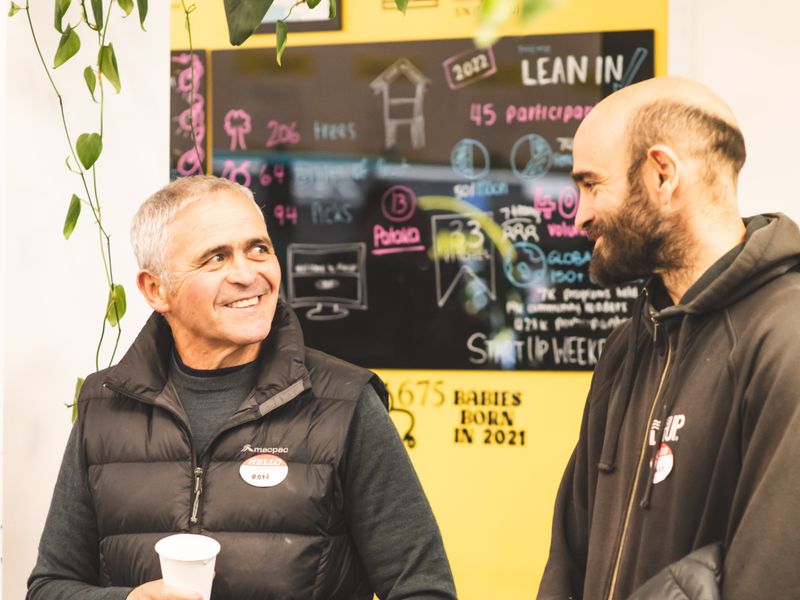 2023 Tairāwhiti Unconference
2023 Tairāwhiti Unconference
Read more from Tāiki e!
- 19 September 2025 Friday karakia and waiata at Gisborne’s Treble Court to be regular community event — Gisborne Herald
- 30 April 2024 Making hope actionable, together!
- 06 December 2023 Strengthening our collective muscle during GEW
- 10 August 2023 Empowering Voices: Reflections on the Tairāwhiti Māori Comms Hui
- 26 April 2023 In 54 hours from 'Imagine if' to 'Here's how'
